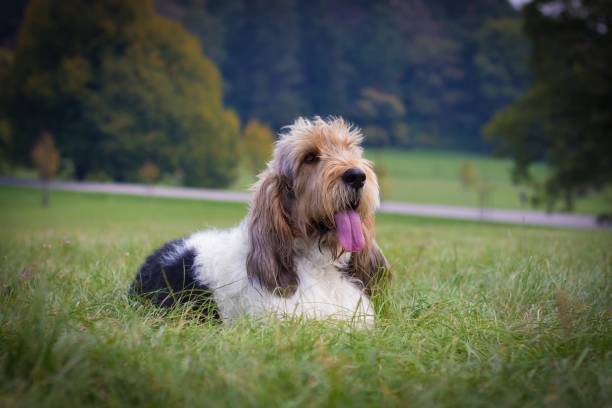Grand Basset Griffon Vendéen

Breed History:
The Grand Basset Griffon Vendéen (GBGV) is a medium-to-large French scent hound developed in the Vendée region of France. The breed traces its roots to the 16th century, sharing ancestry with the Grand Griffon Vendéen, a large, rough-coated hunting hound.
French hunters selectively bred for a shorter-legged, slower-moving hound to pursue hare and deer on foot rather than horseback. This gave rise to the “Basset” types. By the late 1800s, the Grand Basset began to emerge as a distinct breed, longer in leg and body than the Petit Basset Griffon Vendéen, but still smaller than its grand ancestors.
Standardisation came in the 20th century thanks to Paul Dezamy, who emphasised uniform size and hunting capability. The breed was recognised by the FCI in 1976 and more recently by the AKC in 2018.
Height: 40-44 cm
Weight: 18-20 kg
Size: Medium
Life Expectancy: 12–14 years

Breed Appearance:
The Grand Basset Griffon Vendéen is a low-slung, rectangular hound with long ears, a rough double coat, and a distinct beard and moustache. Its overall look is rustic, weatherproof, and expressive—typical of Vendéen hounds.
Its coat is hard, dense, and shaggy, not curly or woolly, and comes in a variety of colours, including white with lemon, orange, black, grizzle, or sable markings. It has a long tail carried high, and its gait is fluid and ground-covering, suited for tracking over long distances.
Breed Type – Scent Hound:
Bred to hunt small to medium game (like hare or roe deer), the GBGV excels in scent trailing, with a loud, melodious voice and great endurance. It was designed for hunting in packs or solo, and is known for its determination, agility, and persistence in thick terrain.
Despite its working roots, it’s also a gentle and sociable companion at home.

Training:
The GBGV is smart, cheerful, and independent, but training requires patience:
-
Responds best to positive reinforcement
-
Needs early socialization and consistent routines
-
Can be stubborn or distracted by scents
-
Recall is a challenge—scent overrules obedience
-
Enjoys structured activities like tracking or scent work
A good fit for confident handlers who enjoy outdoorsy, thinking breeds.
Health & Care:
Generally a healthy and hardy breed, though may be prone to:
-
Ear infections (due to pendulous ears and outdoor activity)
-
Hip dysplasia (moderate risk)
-
Hypothyroidism (occasional)
-
Eye conditions (like entropion, ectropion—rare)
-
Obesity if under-exercised
Routine ear care, joint monitoring, and controlled feeding are key.

Living Conditions:
Adaptable but best suited for active families:
-
Can live in houses with yards or rural settings
-
Not ideal for apartments unless exercised thoroughly
-
Needs secure fencing—prone to wander when on a scent
-
Good with children and other dogs, especially if raised together
-
Prefers companionship—not a dog for isolation or kennel life
Exercise:
Moderate to high energy:
-
Needs 1–2 hours of daily exercise
-
Enjoys long walks, tracking games, and outdoor adventures
-
Mental stimulation is important—scent games, puzzles, or obedience
-
Without activity, may become bored, vocal, or destructive
Built for endurance over speed, the GBGV enjoys consistent outdoor time.
Grooming:
Moderate grooming requirements:
-
Brush 2–3 times a week to remove dirt and tangles
-
Hand-strip or trim coat occasionally to maintain texture
-
Clean ears weekly to prevent infection
-
Nail trimming and dental care are routine needs
-
Bathe only when dirty—coat is relatively dirt-repellent
Sheds moderately year-round, more in seasonal shifts.

Advantages:
-
Friendly, gentle, and social with people and dogs
-
Excellent scent-trailing ability—true to its hunting roots
-
Rare and distinctive in appearance
-
Hardy and weather-resistant coat
-
Calm indoors when well exercised
-
Adaptable to many home environments
Disadvantages:
-
Strong prey drive and scent obsession—recall is difficult
-
Needs regular exercise and stimulation
-
Grooming (especially coat care and ear cleaning) is ongoing
-
Can be vocal, especially when excited or following a trail
-
May chase small animals if not properly managed
-
Rare breed—finding a reputable breeder can be challenging

